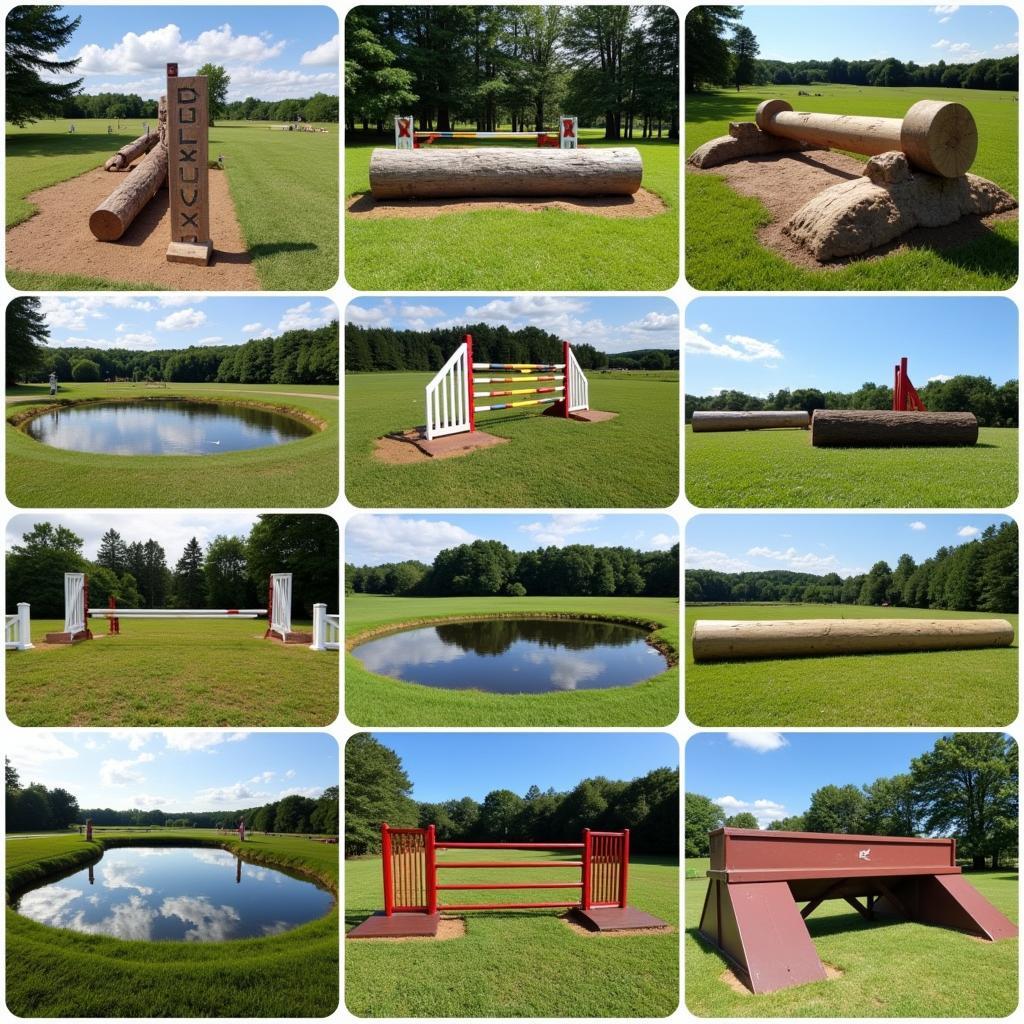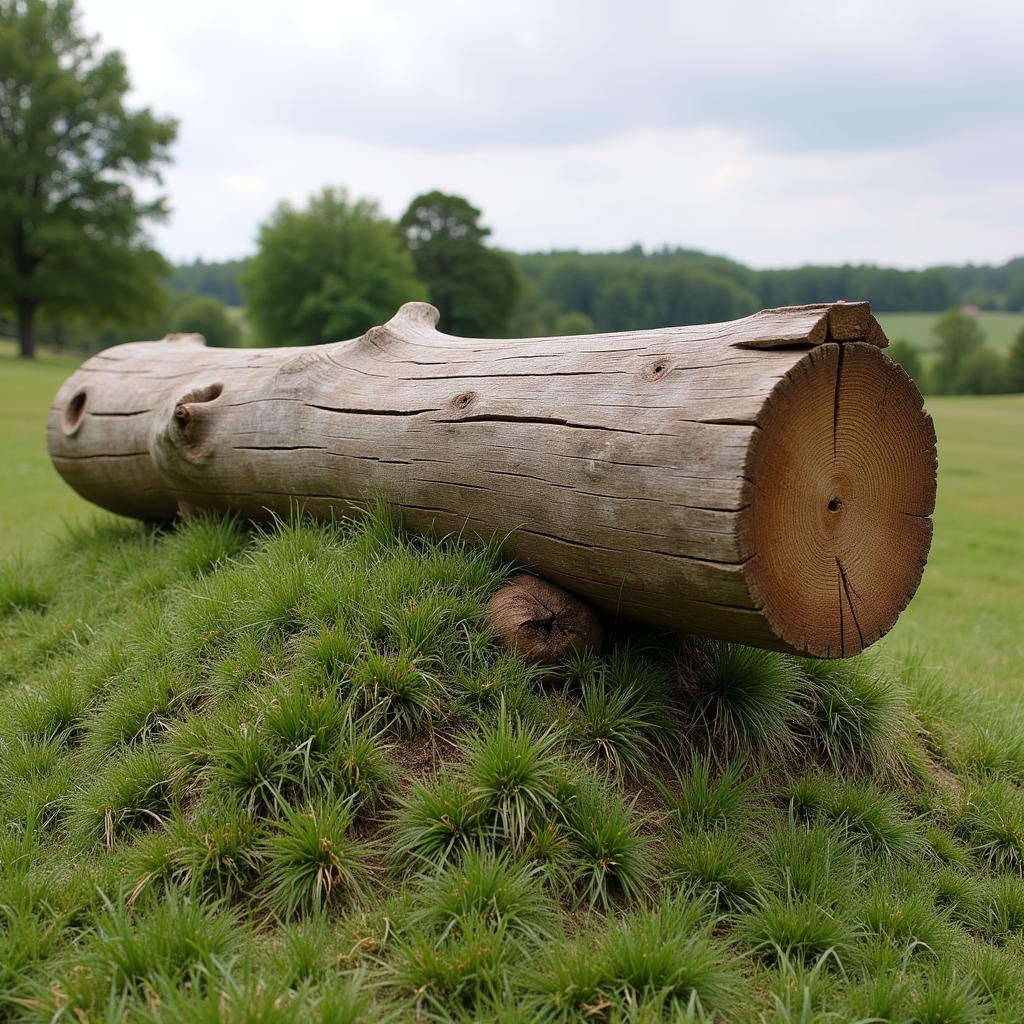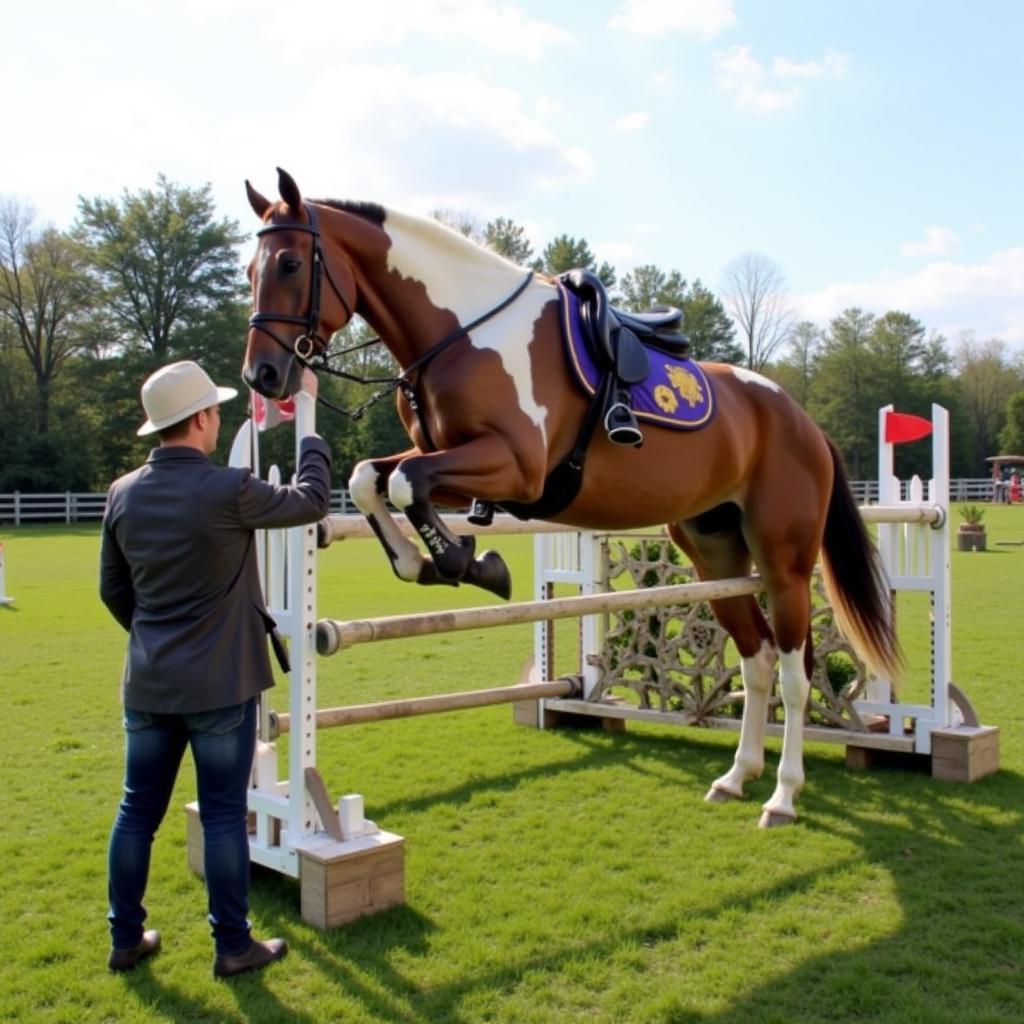Cross Country Horse Jumps For Sale open up a world of possibilities for equestrians passionate about this exhilarating discipline. Whether you’re a seasoned competitor or just starting your cross country journey, finding the perfect jumps is crucial to creating a safe, challenging, and enjoyable course for both horse and rider.
Selecting the Ideal Cross Country Jumps
 Different Types of Cross Country Jumps
Different Types of Cross Country Jumps
Choosing the right cross country jumps involves careful consideration of several factors. Here’s a breakdown to guide you:
Skill Level and Experience
- Beginner: Start with inviting, straightforward jumps like logs and basic oxers at lower heights to build confidence and technique.
- Intermediate: Gradually introduce more technical elements such as angled oxers, ditches, and narrow fences.
- Advanced: Explore complex combinations, challenging water features, and substantial jumps that test precision and bravery.
Jump Materials and Construction
- Durability: Opt for sturdy materials like pressure-treated wood, durable plastics, or aluminum for longevity, especially in outdoor environments.
- Safety: Look for rounded edges, smooth surfaces, and secure construction to minimize the risk of injury to both horse and rider.
- Stability: Jumps should be heavy or have a secure base to prevent tipping or movement during use.
Course Design and Flow
- Variety: Incorporate a mix of jump types, heights, and distances to keep the course stimulating and test different riding skills.
- Logical Progression: Arrange jumps in a sequence that gradually increases in difficulty, allowing both horse and rider to warm up and build confidence.
- Terrain Integration: Utilize natural features like hills, dips, and water obstacles to create a more authentic and challenging cross country experience.
Essential Cross Country Jumps for Every Course
A well-rounded cross country course typically incorporates a variety of jump types to test different skills. Here are some staples:
1. Logs
 A Natural Log Cross Country Horse Jump
A Natural Log Cross Country Horse Jump
- Versatility: Logs offer a straightforward yet adjustable challenge, suitable for all skill levels.
- Natural Appearance: Logs blend seamlessly into outdoor settings, enhancing the cross country aesthetic.
- Adaptability: Logs can be stacked, angled, or combined with other elements to create different fence configurations.
2. Oxers
- Technical Challenge: Oxers, with their wider spread, encourage careful striding and precise take-off and landing spots.
- Progression: Oxer width can be adjusted to suit different skill levels, making them an ideal jump type for riders to advance their abilities.
- Variations: Open oxers, Swedish oxers, and angled oxers add further complexity and require precise riding.
3. Water Jumps
- Unique Element: Water jumps introduce a psychological and technical test for both horse and rider.
- Confidence Building: Gradual introduction to water jumps, starting with shallow depths and straightforward approaches, is key.
- Safety First: Ensure a safe landing area beyond the water and clear markings to indicate water depth.
Tips for Buying Cross Country Horse Jumps
 Inspecting Cross Country Jumps Before Purchase
Inspecting Cross Country Jumps Before Purchase
Finding the right cross country jumps involves more than just browsing a catalog. Here’s what to keep in mind:
1. Reputable Suppliers
- Quality Assurance: Choose established manufacturers or suppliers known for using durable materials and safe construction practices.
- Customer Reviews: Research online reviews and seek recommendations from fellow equestrians to gauge the supplier’s reliability and product satisfaction.
- Warranties and Guarantees: Inquire about warranties or guarantees offered on the jumps, providing peace of mind in case of defects or issues.
2. Inspection is Key
- In-Person Examination: Whenever possible, physically inspect the jumps before purchasing to assess their condition, construction, and materials firsthand.
- Check for Wear and Tear: Look for signs of damage, rust, rot, or other wear and tear that could compromise safety and longevity.
- Assess Stability: Ensure jumps are stable, well-balanced, and unlikely to tip over during use.
3. Budget Considerations
- Set a Realistic Budget: Determine how much you’re willing to spend on cross country jumps, considering factors like material quality, design complexity, and shipping costs.
- Prioritize Safety: Invest in well-made, safe jumps from reputable suppliers, even if it means adjusting your budget or starting with a smaller number of jumps initially.
- Consider Long-Term Value: Opt for durable, long-lasting jumps that will provide years of use and require minimal maintenance, offering a better return on investment.
Conclusion
Investing in high-quality cross country horse jumps is an investment in your riding journey. By carefully selecting jumps that suit your skill level, riding goals, and budget, you can create an exciting and rewarding cross country experience for both you and your equine partner. Remember, safety, quality, and thoughtful course design are paramount to enjoying this thrilling equestrian discipline to the fullest.
FAQs about Cross Country Horse Jumps
1. What are the standard dimensions for cross country horse jumps?
Cross country jump dimensions vary depending on the level of competition and the type of jump. However, some general guidelines include:
- Height: Beginner jumps may start at 2 feet, while advanced jumps can exceed 4 feet.
- Width: Oxers typically range from 3 to 6 feet wide, depending on the level.
2. How do I maintain my cross country horse jumps?
Regular maintenance extends the lifespan of your jumps. Here are some tips:
- Inspect Regularly: Check for loose screws, cracked wood, or other signs of wear and tear.
- Clean and Treat Wood: Apply a weather-resistant sealant or paint to wooden jumps to prevent rot and decay.
- Store Properly: Store jumps in a dry, covered area when not in use to protect them from the elements.
3. Can I build my own cross country horse jumps?
Yes, building your own jumps is possible with the right skills and materials. However, prioritize safety:
- Use Sturdy Materials: Opt for pressure-treated lumber, durable plastics, or metal.
- Secure Construction: Use strong joints and fasteners to ensure the jumps are stable and won’t fall apart.
- Consult Resources: Refer to reputable building plans and seek advice from experienced individuals to ensure safety standards.
4. Where can I buy cross country horse jumps online?
Many online retailers specialize in equestrian equipment, including cross country jumps. Some popular options include:
5. What other equipment do I need for cross country riding?
In addition to jumps, essential cross country equipment includes:
- Safety Gear: A properly fitted ASTM-SEI certified helmet, a safety vest, and medical armband are crucial.
- Appropriate Tack: A well-fitting saddle designed for jumping and a breastplate and overgirth to prevent tack from slipping are recommended.
- Boots: Protective boots for your horse’s legs, such as bell boots, splint boots, and open-front boots, help minimize the risk of injury.
Interested in exploring more equestrian topics? Check out our other informative articles:
- English riding horses for sale – Discover a selection of high-quality English riding horses available for purchase.
For personalized assistance with selecting the perfect cross country horse jumps or any other equestrian needs, don’t hesitate to reach out to Justus Horses USA. Contact us at:
Phone: 0772127271
Email: [email protected]
Address: QGM2+WX2, Vị Trung, Vị Thuỷ, Hậu Giang, Việt Nam
Our dedicated team is available 24/7 to provide expert guidance and exceptional customer support.